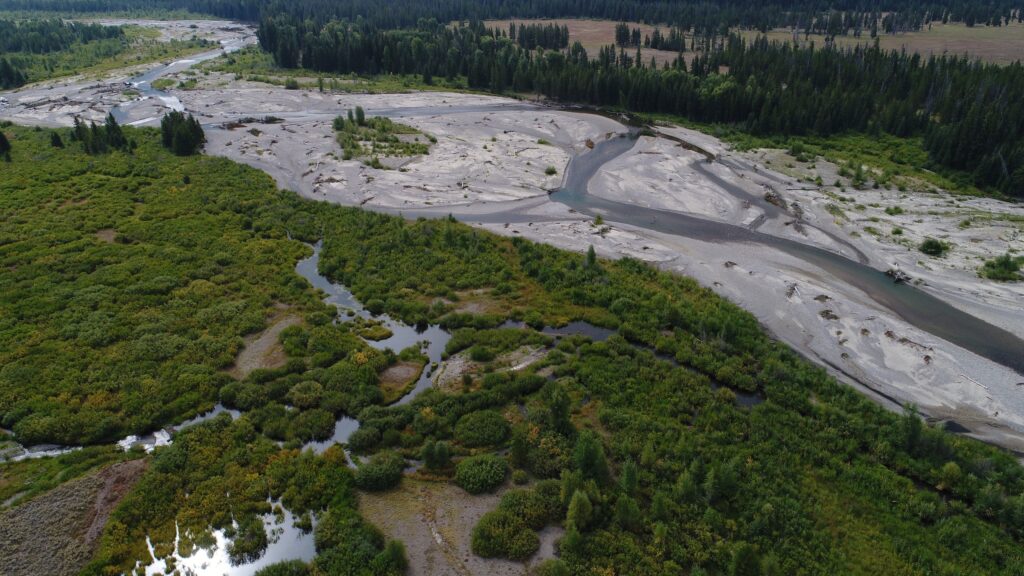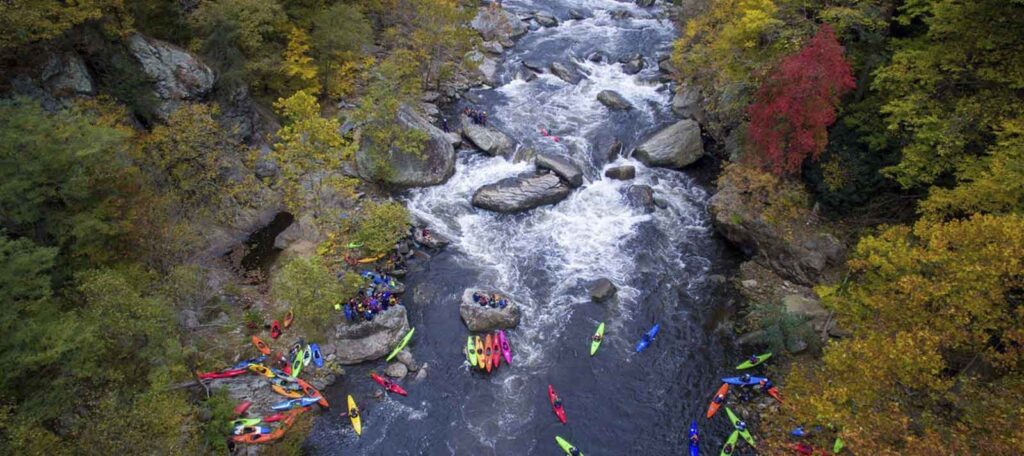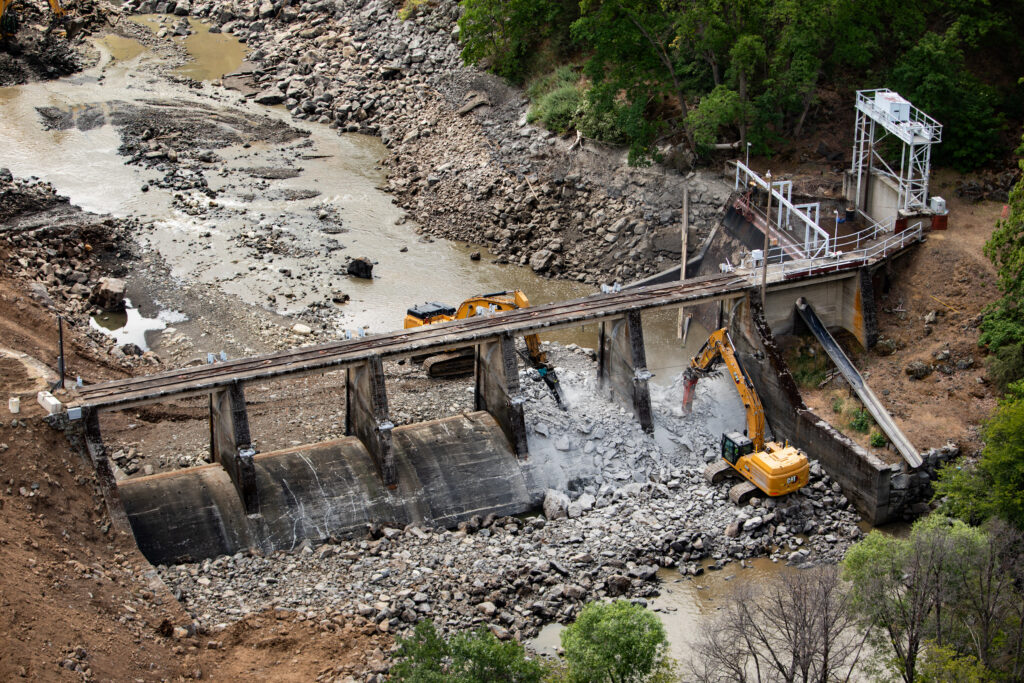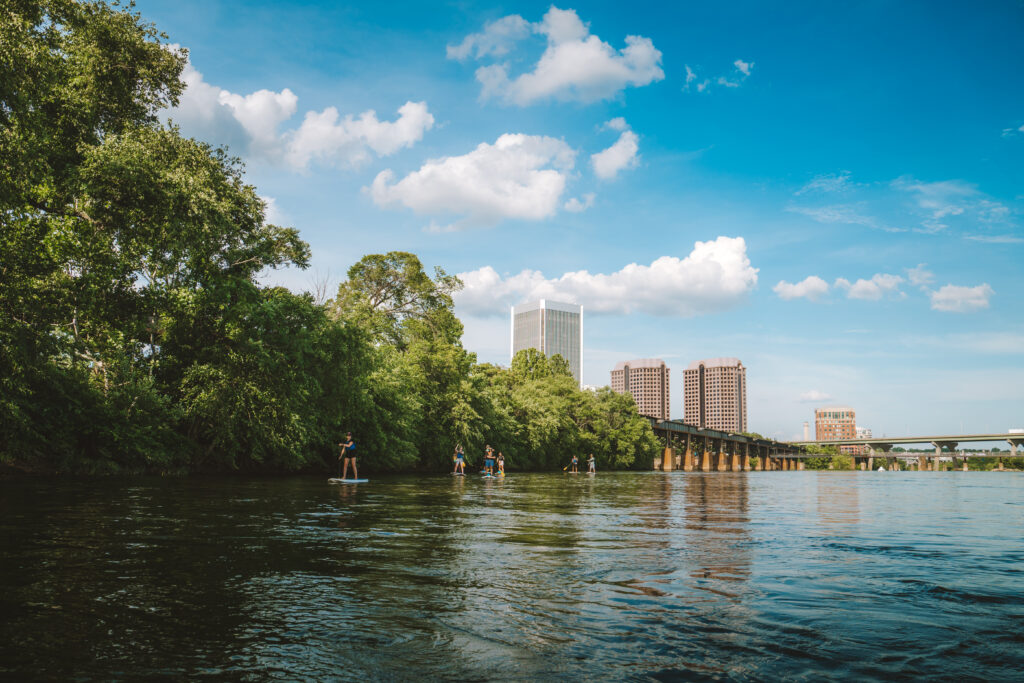
This blog was co-written by Amy McNamara, Northern Rockies Director, Natural Resources Defense Council, Alicia Marrs, Western Water Director, National Wildlife Federation, and Fay Hartman, Southwest Conservation Director, American Rivers
________________________________
Freshwater ecosystems provide clean drinking water, reduce the impacts of floods and fires, and are essential habitat for fish and wildlife. Despite these benefits, rivers and wetlands are often undervalued and overlooked, and the rapid loss and degradation of freshwater systems is undermining our ability to tackle the climate and biodiversity crises. Some of the most common sense and cost-effective options to address these crises are nature-based solutions.
Nature-based solutions use or mimic natural features or processes to improve biodiversity, strengthen resilience for disaster and hazard-risk management, support climate adaptation, and store carbon to mitigate climate change. For freshwater systems, these strategies include protecting and restoring wetlands to capture and filter water, reconnecting streams and rivers with their floodplains to increase their ability to refill groundwater stores and dampen flooding, and managing for beavers to create, maintain, and expand wetlands. For example, managing for beavers can increase the health of streams and wetlands when established in the right location with minimal human-beaver conflict, making them one of the most cost-effective restoration practices available.

Let's Stay In Touch!
We’re hard at work for rivers and clean water. Sign up to get the most important news affecting your water and rivers delivered right to your inbox.
Fortunately, this month, the United States took important steps to stimulate future investment in protecting and restoring these critical freshwater ecosystems. The U.S. Department of Interior, which oversees the Bureau of Land Management, National Park Service, and Bureau of Reclamation, among others, released a new policy designed to prioritize the use of nature-based solutions and a roadmap which will guide investment in our river systems as well as inland and coastal wetlands. The Department also announced a plan to invest $51 million to restore and protect rivers across the country. These actions position the U.S. to accelerate thoughtful and strategic investment in our natural water infrastructure.
Prior to settlement and expansion across North America, healthy rivers and streams were abundant, recharging aquifers, slowing wildfires, and sustaining fish and wildlife. Over time, the stream systems that were once full of water and life have become narrower and straighter and less capable of serving the valuable role as natural sponges and vital habitat. Today, in part due to the absence of beavers on the landscape, most of our freshwater ecosystems are a shell of their former selves, leaving our communities and economies more vulnerable to persistent drought, record rainfalls, and urban flooding. Worse still, one of the nation’s principal tools for protecting and restoring healthy streams and wetlands, the federal Clean Water Act, was dramatically weakened earlier this year by a reckless Supreme Court decision.
The severity of the climate and biodiversity crises requires urgent action backed by national plans and strategies that integrate and accelerate restoration for rivers and wetlands. As the U.S. looks to implement nature-based solutions at scale, here are three areas ripe for investment:
- The Bureau of Land Management (BLM) should launch a Healthy Riverscapes Initiative to prioritize riverscape restoration on BLM managed lands and partner with states, tribes, and local stakeholders to create good paying, private, non-profit, and public sector restoration jobs in rural and tribal communities. The Bureau should invest where: (a) conditions are right for low-tech, process-based restoration, (b) ecological and hydrological benefits are high, and (c) partner interest and stakeholder engagement is high. Finally, to support such an effort, the BLM should finalize its Public Lands Rule with strong provisions for both conserving and restoring priority lands and waterways.
- The Bureau of Indian Affairs and other agencies should invest in and partner with tribal wildlife management programs that are leading the way in restoring beavers on their ancestral lands. Tribal communities have long recognized the value of maintaining beavers on their landscapes and are demonstrating what is possible when beavers are returned to these ecosystems. In addition to making deep and sustained investments to increase the capacity of tribally led fish and wildlife programs and agencies, we all have the responsibility to acknowledge and learn from our tribal and Indigenous colleagues as we seek to employ resilient and time-tested approaches to protect and restore our shared natural resources.
- Congress should pass the bi-partisan Recovering America’s Wildlife Act (RAWA) to make a generational investment in state, tribal, and territorially led wildlife conservation programs which include habitat restoration. States like California, Oregon, and Utah have already begun incorporating beavers, and the habitat they create for other fish and wildlife, into their State Wildlife Action Plans—sustained and increased funding from RAWA could empower other states to follow their example.
As the impacts from climate change march forward, our freshwater ecosystems will only increase in importance and value. It’s essential we use every tool in the toolbox, including nature-based solutions, to protect and restore our rivers, watersheds, and the benefits they provide.



